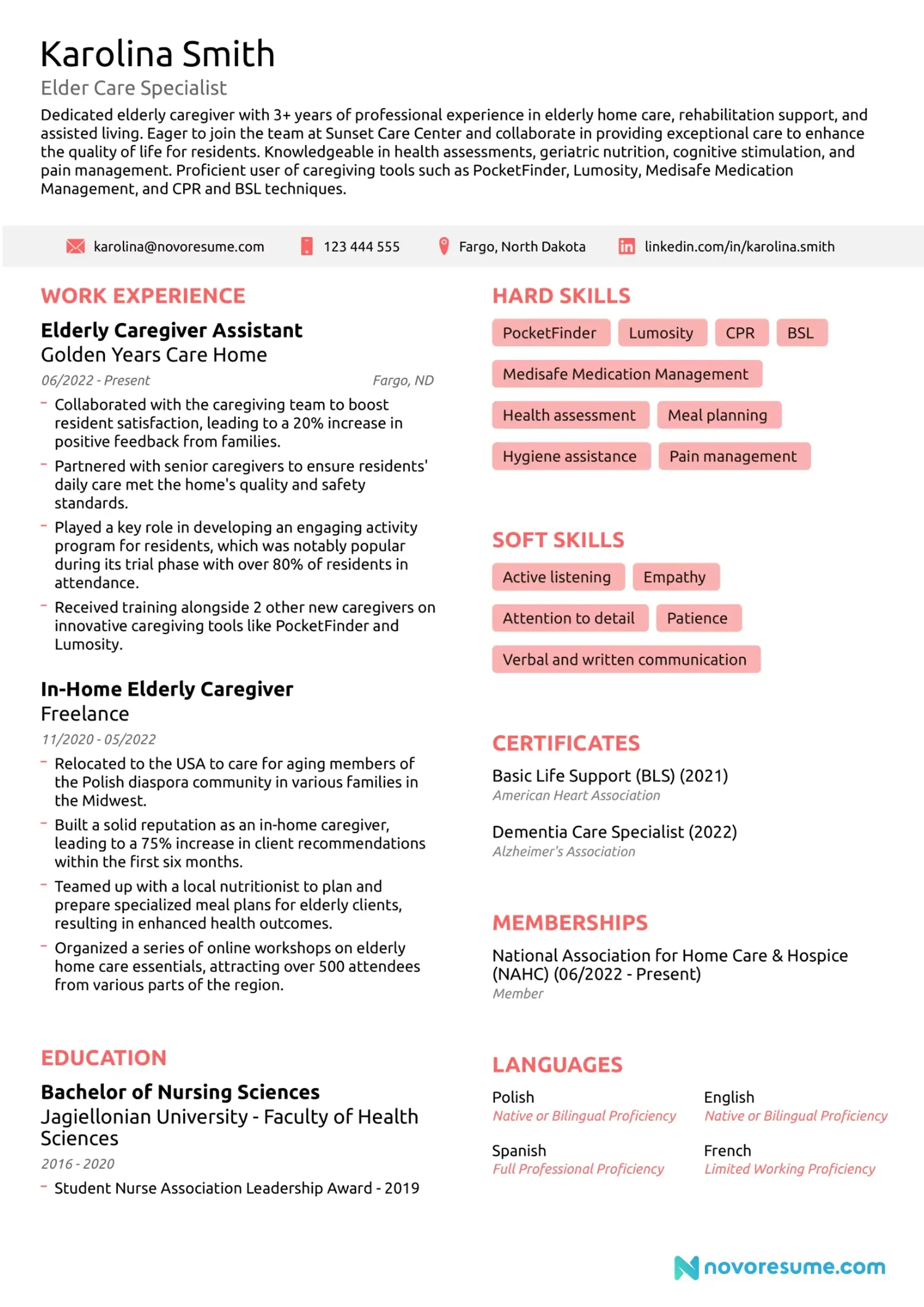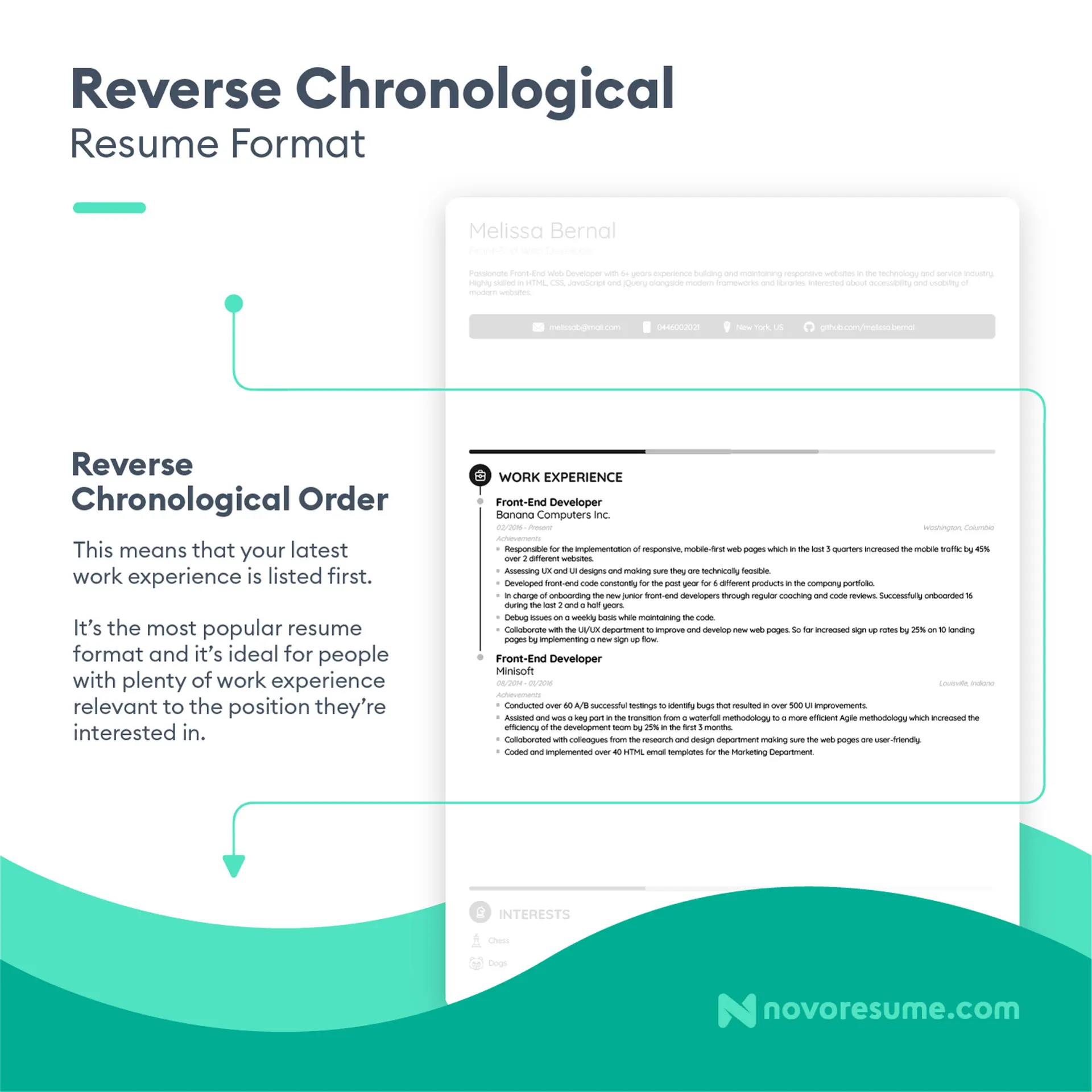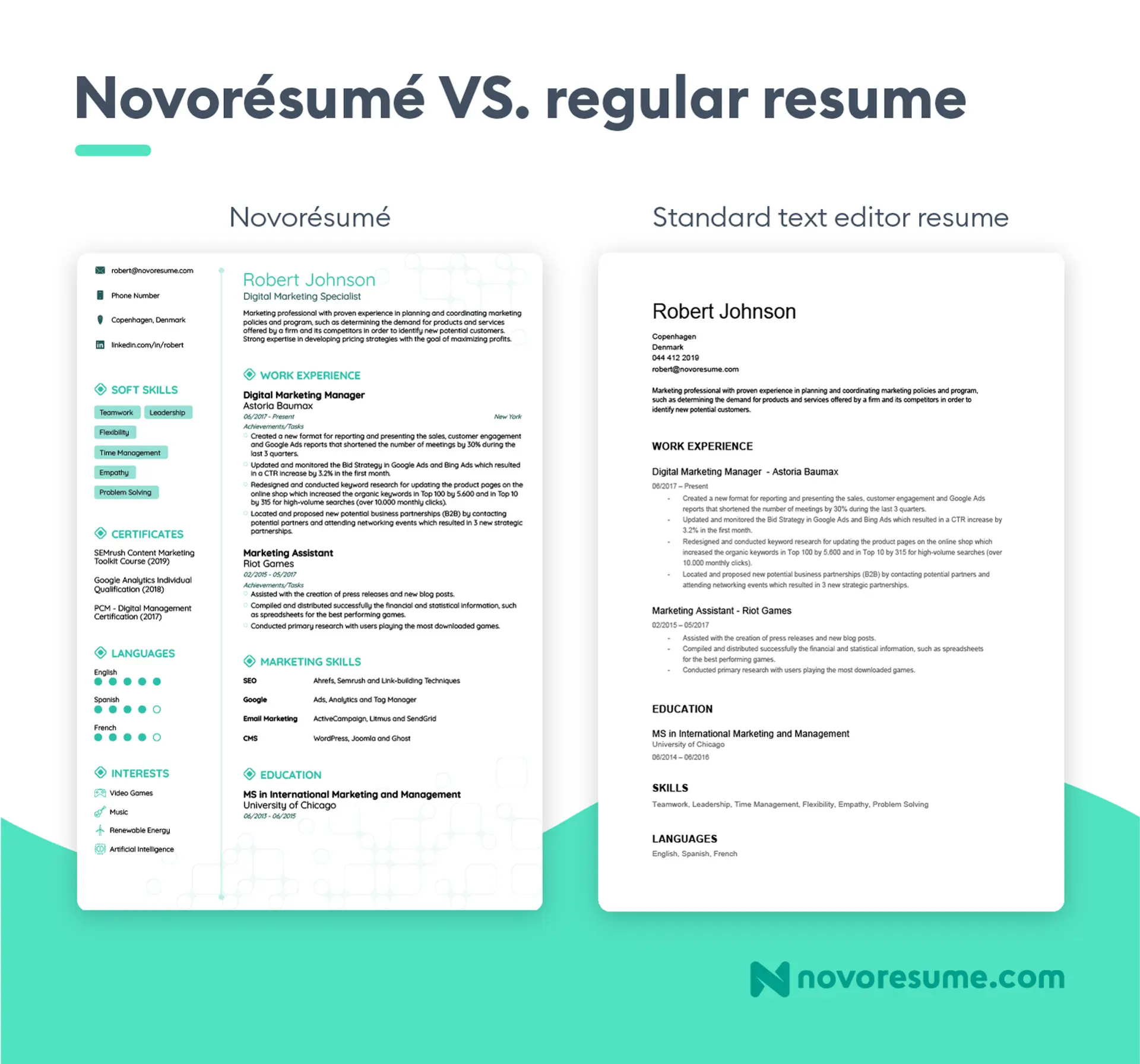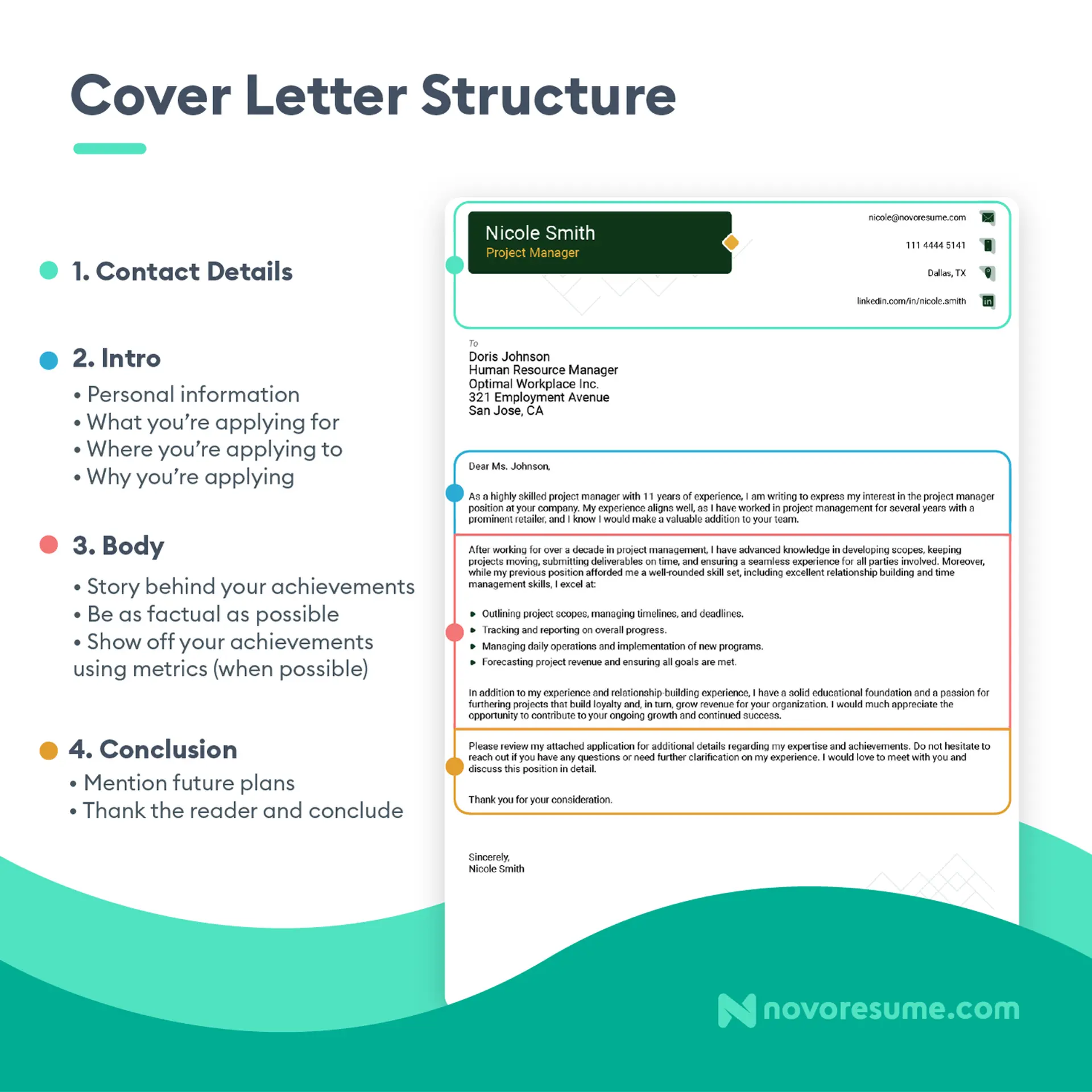
Caregiver Resume Example (Full Guide, Tips & Templates!)
Being a caregiver is a truly noble role.
Day in and day out, you provide support, comfort, and care to those in need. Your work is indispensable in any community.
But one thing you’re having trouble taking care of is your resume.
Somehow, whatever you write just doesn’t reflect the depth of your expertise and compassion.
It’s a common problem many caregivers struggle with, but there’s no need to worry.
This article is here to take care of you.
Our detailed guide is going to show you everything you need to put on your resume.
We’re going to cover:
- What Makes an Amazing Caregiver Resume Example
- 9 Steps for an Incredible Caregiver Resume
- What Your Caregiver Resume Should Include
Let's dive in.
Caregiver Resume Example

The caregiver resume above is sure to impress any employer and score an interview!
Now let’s look at what it gets right:
- Uses a Reverse-Chronological Order. This is a great way for hiring managers to see what you've been up to recently and how you've grown in your role since it lists your newest job experiences first.
- Gives Clear Contact Details. Your resume should make it easy for employers to reach out and keep your contact information crystal clear. This candidate lists their phone number, professional email, location, and LinkedIn profile.
- Has a Strong Resume Summary. To grab the hiring manager’s attention from the get-go, this caregiver resume conveys the candidate’s top skills and achievements in a couple of lines that the hiring manager can read at a glance.
- Talks About Achievements with Facts and Data. Whenever possible, you should always back up your achievements with numbers for extra credibility to show the hiring manager what you can bring to the table.
- Keeps the Education Short. Hands-on experience speaks louder than education, so this candidate’s caregiver resume keeps it short.
- Uses Bullet Points. Your resume can only benefit from extra readability, and that’s why you should avoid lengthy paragraphs. Bullet points break up information and make your resume super easy to skim and find the important bits at a glance.
- Shows Both Hard and Soft Skills. The candidate lists both their hard skills and soft skills, making it easy for potential employers to see exactly how well-trained they are.
- Leverages Optional Sections. The caregiver resume above makes sure to list other important sections like certifications, memberships, and foreign languages, which are crucial for certain positions.
9 Steps for an Incredible Caregiver Resume
You know what a job-winning caregiver resume looks like, and now it’s time to write your own.
Just follow these steps, and you’re all set:
#1. Pick the Right Format and Layout
Choosing the right resume format is essential to writing a job-winning caregiver resume.
The three most common resume formats you can pick from are:
- Reverse-chronological (also known as chronological)
- Functional (also known as skill-based)
- Combination (which merges the best of both)
In 99% of cases, we highly recommend the reverse-chronological resume format when making your caregiver resume.
The reverse-chronological resume format puts your most recent work experience and achievements first, which is exactly what hiring managers are most interested in.
Plus, it’s what hiring managers worldwide expect, so it’s obviously the best choice.
Here’s what it looks like:

After settling on a format for your caregiver resume, the next big step is getting the layout right.
Before the hiring manager even reads your resume, they'll look at it. And if it’s a messy, unorganized document, they might just toss it aside.
Here's how to avoid that happening and make your resume's appearance shine:
- Choose a Font Style. Your caregiver resume’s font should be easy to read but stylish. Don’t go for Comic Sans, choose something simple, clean, and professional, like Roboto or Ubuntu.
- Set the Font Size. Stick to 10-12 points for your main text’s body and 14-16 for headings. You don’t want the hiring manager to squint when trying to read your resume.
- Stick to One Page. Unless you have more than a decade of relevant experience, one page is more than enough for your caregiver resume.
- Use Bullet Points. Bullet points are easier on the eyes, and they make your achievements stand out, so use them over paragraphs.
- Save as PDF. Your caregiver resume should look the same across any operating system or device the employer opens it on. The only reason you shouldn’t save it as a PDF is if the employer specifically requests that you send it in a different file format, like a Word document.
Or Use a Resume Template Instead
Let's be honest—crafting a caregiver resume can sometimes feel like planning a month-long patient care schedule.
Adjusting margins, setting the right line spacing, and ensuring everything fits neatly on one page can quickly gobble up both your time and patience.
But what if there's an easier way?
Try our free resume templates, made hand-in-hand with experienced HR experts.
Each template is ATS-friendly and balances readability with a clean, contemporary design, striking the perfect mix of professionalism and creativity.
So, instead of wrestling with a generic word processor for hours on end, why not make a standout caregiver resume in a flash?
Just take a look at one of our resume templates compared to a basic text editor resume template:

#2. Add Your Contact Information
The contact information section on a caregiver resume should be clear and straightforward.
Whatever information you provide needs to be factually correct. A single misspelled letter in your email address or a typo in your phone number, and you won’t be getting any interviews.
Here's exactly what this section needs to include:
- Full Name. (E.g.: Jordan Smith)
- Job Title. Your resume’s job title should match the role you're applying for. (E.g.: Senior Caregiver)
- Phone Number. For international applications, remember to include the country dial code at the beginning of your phone number.
- Email Address. Use a professional-sounding email, preferably some version of your first and last name. (JSmithCareGuru@yahoo.com isn’t ideal, but jordan.smith@gmail.com is perfect.)
- Relevant Links. If you have a LinkedIn profile or another relevant platform showcasing your caregiving credentials, add it. It can be a valuable asset to your application.
- Location. Your city and state/country are enough. If you're open to moving out of state for a position, make sure you specify that on your resume.
Easy, right?
Now, here’s a comparison between a well-made contact information section and one that’s less than ideal:
Correct Example:
Jordan Smith - Senior Caregiver+1 312-555-6789jordan.smith@gmail.comwww.linkedin.com/in/jordansmith-careChicago, ILIncorrect Example:
JJ Smith - Care Giver312555678, JJSmithCares4U@gmail.comIL, Chicago
#3. Include an Attention-Grabbing Resume Summary
Hiring managers flip through countless resumes daily and take less than 7 seconds to decide if a candidate is worth paying more attention to.
With such a brief window to catch their eye, this is where the resume summary comes in.
Positioned right at the top of your resume, this 2-4 sentence paragraph serves as an overview of who you are as an applicant and what you can bring to the table.
But depending on the amount of experience you have, you might opt for a resume objective instead.
Here’s the difference between them:
- Resume summary. This is perfect for seasoned caregivers, providing a brief, engaging summary of your professional journey, including your years of experience, standout achievements, and key caregiving skills.
- Resume objective. If you’re new to caregiving, the resume objective highlights your qualifications, skills, and career goals as an up-and-coming talent in the field.
Here are some examples to drive the point home:
Caregiver Resume Summary Example:
- Dedicated caregiver with over five years of experience, aiming to join the esteemed ABC Health Services team. Improved patient recovery rates by 25% during tenure at Healing Hands Homecare. Proficient in patient monitoring and health assessment. Passionate about providing compassionate and comprehensive care in a team setting.
Caregiver Resume Objective Example:
- Diligent Nursing Assistant graduate looking to begin a caregiving career with ABC Health Services. Strong foundation in patient care principles and hands-on experience during clinical rotations. Eager to provide attentive and holistic care to individuals in need. Excited to grow and develop in the caregiving community.
#4. Describe Your Previous Work Experience
For any resume, the work experience section is the golden ticket to impressing an employer.
In the caregiving industry, it tells hiring managers about your hands-on experience, skills, and the kind of care you can provide.
Here's how to set up a brilliant work experience section:
- Start with the most recent role. Go for the reverse chronological order so employers can see your latest caregiving role first and know where you're coming from.
- Use formal job titles. Only use the official titles you had for a given role. Job description buzzwords like “compassion guru” or “wellness wizard” might sound fun, but they can confuse the employer and make you sound unprofessional. Just use recognized titles like "Personal Care Aide" or "Home Health Assistant."
- Detail where you worked. Share the name and location of your past caregiving institutions or employers. If they aren’t well-known, you can provide a brief description to give the hiring manager some context.
- Specify the employment period. Stick to the mm/yyyy format; it’s neat and it’s a resume standard.
- Mention your accomplishments and achievements. Your responsibilities and achievements can make or break this section, so use bullet points to make it clean and readable. Aim for 5-6 points for your most recent role and 3-4 for older ones.
Now you know the basics.
If you want to really make an impression, though, you need to take your work experience section from great to amazing.
Here’s how:
- Keep it relevant. If you've been on the job market for a while, you should only zoom in on your most recent and most relevant roles. Your experience as a server during college shouldn’t make the cut.
- Achievements over responsibilities. While your responsibilities are important, it's your achievements that can really set you apart from other candidates. Did you introduce a new activity that improved the well-being of those you cared for? Highlight it on your resume!
- Back it up with data. Numbers speak volumes and add credibility to your achievements. If you managed to reduce medication errors by 20% or improve patients’ physical activity by 30%, make sure to add that to your resume.
- Use active verbs. Words like "managed" and "handled" are too overused to impress hiring managers. Energetic verbs like "implemented," "transformed," or "enhanced" show you’re proactive and know what you’re talking about.
Here’s an example:
Caregiver Resume Work Experience Example:
Elderly CaregiverGolden Age Care FacilitySpringfield, IL06/2019 - 09/2022- Collaborated with a multi-disciplinary team to ensure comprehensive elderly care.
- Orchestrated weekly activity sessions that boosted patient morale by 40%.
- Managed care for 10+ elderly residents, focusing on personalized daily routines.
- Trained 5 new staff members, ensuring adherence to facility care standards.
- Implemented a feedback system with families, enhancing communication by 30%.
What If I Don’t Have Work Experience?
If you’re jumping into the caregiving world straight out of school, you might have no work experience on your resume.
Take a breath - every experienced caregiver started off just where you are. The good news is that finding a job in caregiving isn’t just about the caregiving jobs you've had. It’s about conveying your compassion, skills, and understanding of care.
If you haven’t clocked in official hours at a care facility or in someone’s home, there are other experiences you can focus on.
Think about the times you've nurtured, shown compassion, and been there for others. That also counts.
List experiences like:
- Volunteer roles at community centers or hospitals
- Caring for a family member or a friend’s relative
- Academic projects or training related to caregiving
- Personal experiences that highlight your nurturing nature (like being a stay-at-home mom)
- Extracurricular activities, like clubs or groups, focused on caregiving or health
Let’s look at an example:
Personal Experience Section:
Primary CaregiverCare for Grandmother with Alzheimer'sSpringfield, IL09/2021 - 04/2023- Provided daily assistance, ensuring safety and comfort for my grandmother during the progression of Alzheimer's.
- Collaborated with healthcare professionals for regular check-ups and to maintain a medication schedule.
- Designed memory-stimulating activities, which enhanced mood and cognitive function.
- Received training on Alzheimer’s care to provide the best support possible.
- Organized meetings to discuss care plans and progress, improving communication and labor division among household members.
This goes to show that it’s not always about the formal roles you've had. It’s about the heart, dedication, and skills you bring to the table, even if you’re trying to find your first job.
#5. List Your Education
Your skills and experience are the spine of your caregiving resume, but that doesn’t mean you should skip over your education section entirely.
Having an education isn't just about having a degree; it can give you credibility and show employers you have a good grasp of patient care. In fact, over 40% of caregivers have some college experience under their belt.
Here’s what this section should always include:
- Degree Earned. E.g., Associate of Science in Nursing
- Institution's Name. E.g., Florence Nightingale College of Nursing
- Location. E.g., Boston, MA
- Duration of Study. E.g., 2016-2020
If you already have experience working as a caregiver, you don’t need to go into any more detail. But if you’re a recent graduate, you might want to mention some of your courses or relevant care experience from your studies.
Here’s an example:
Caregiver Education Section:
Associate of Science in NursingFlorence Nightingale College of NursingBoston, MA2016-2020Courses:Fundamentals of Nursing Care, Geriatric Care and Management, Mental Health Nursing, Patient Assessment and Communication
Only your highest degree is necessary on your resume, so if you’ve been to college, you can skip listing your high school diploma.
But if you don’t have a degree, don’t worry. The majority of caregivers only have high school diplomas.
💡
Quick Tip
If you have other certifications or licenses, don’t list them under your education - there’s a separate section where you can show them off.
#6. Show Off Your Skills
The skills section is another crucial part of your caregiver resume.
This section provides hiring managers with a quick overview of what you're capable of and how well you'd fit into their caregiving team.
Keep in mind, though, that hiring managers don’t care how skilled you are in areas that don’t match the job.
For example, if you're aiming for a role in elderly care, you don’t need to mention skills related to newborn care. These are completely different areas of caregiving, and you’d be wasting valuable space on your resume.
Just follow these tips to make sure your skill section pops out of the page:
- Tailor skills to the job. Read the job ad carefully to identify any specific care techniques or experience with certain tools that might be mentioned. If you see any skills you have, make sure to add them to your resume.
- Stay updated on trends. Caregiving keeps evolving and improving with new methodologies and techniques, so make sure to read up on the latest. Keep abreast of the newest trends and incorporate relevant, updated skills you possess.
- Organize your skills. Keep your hard skills separated from your soft skills so potential employers can quickly find the exact skill they’re looking for on your caregiver resume.
You've got the gist of listing skills on your caregiver resume.
The question now is, which skills should you list?
Just browse our handpicked list of the 67 most wanted hard and soft skills for caregivers in 2025!
67 Most In-Demand Caregiver Skills
52 Caregiver Hard Skills
- Basic Life Support (BLS)
- CPR certification
- First Aid proficiency
- Patient transfer techniques
- Wound care
- Medication administration
- Use of assistive devices
- Physical therapy assistance
- Vital signs monitoring
- Infection control practices
- Alzheimer's care techniques
- Pain management
- Geriatric care expertise
- Pediatric care techniques
- Diabetic care management
- Feeding tube management
- Ostomy care
- Seizure precaution and response
- Tracheostomy care
- Behavioral management techniques
- PEG tube feeding
- Mobility assistance
- Respiratory care
- ClearCare
- QuietCare
- eClinicalWorks
- PocketFinder
- Nest Cam
- Lumosity
- Medisafe Medication Management
- Physical stamina
- Proper lifting techniques
- Hospice and palliative care principles
- Hygiene assistance
- Foley catheter management
- Colostomy care
- Speech therapy techniques
- Range-of-motion exercises
- Sensory stimulation activities
- Fall prevention strategies
- Safe transportation techniques
- Meal planning
- Oral hygiene and denture care
- Oxygen administration
- Fluid balance monitoring
- Health assessment tools
- Adaptive equipment usage
- Bedsore prevention
- Ergonomic patient handling
- Pressure relief
- Elder abuse awareness and prevention
- Emergency evacuation procedures
15 Caregiver Soft Skills
- Empathy
- Patience
- Effective communication
- Problem-solving
- Adaptability
- Time management
- Attention to detail
- Active listening
- Observational skills
- Discretion and confidentiality
- Stress tolerance
- Positive attitude
- Teamwork
- Conflict resolution
- Critical thinking
#7. Mention Your Licenses and Certifications
In the USA, being a caregiver doesn’t require specific education or training.
However, some positions will require you to have certain licenses or certifications.
While they aren’t mandatory for any caregiving job, they’re a game-changer for your resume. These qualifications show your dedication to the field and guarantee that you've been trained according to industry standards and have what employers need.
Here’s what to keep in mind when listing them on your resume:
- License/Certification Name. Start with the name of the license or certification. (E.g., Home Health Aide (HHA))
- Issued by. Add the name of the organization and location, if you have the space for it. (E.g., A&E Career Institute, Los Angeles, CA)
- Date earned. The mm/yyyy is more than enough. (E.g., 11/2022)
Just keep this section neat and easy for the hiring manager to read at a glance.
Here’s an example:
Caregiver Licenses & Certifications Example:
Licenses & Certifications:- Certified Nursing Assistant (CNA)
American Red Cross - June 2019 - First Aid Certification
National Safety Council - May 2020
- Certified Nursing Assistant (CNA)
#8. Consider Adding Optional Sections
Once you’ve covered the basics like your professional experience, education, and skills, you might have some leftover space on your caregiver resume.
Every bit of space on your resume should be used carefully, so consider adding optional sections to give your application more depth.
Here are some sections you can choose from:
- Awards. If you’ve ever received an award for the quality of your caregiving or your dedication to the field, then your resume is the best place to list it.
- Memberships. Being a member of professional caregiving associations shows commitment to staying updated and connected in the industry.
- Publications or conferences. Your devotion to caregiving can shine through in any articles or papers you've written or events you've spoken at, including conferences, talks, and presentations.
- Languages. Speaking multiple languages can be a huge asset since it opens you up to a broader range of patients you can communicate with and care for.
- Hobbies and interests. What you do in your free time can actually provide valuable insight into you as a person, which might sway employers. Anything from reading about medical advancements to volunteering at a local dog shelter can speak volumes about you.
Let’s take a look at some examples:
Optional Caregiver Resume Sections:
Awards:- "Caregiver of the Month" – Senior Care Homes, May 2021
Hobbies & Interests:- Ukrainian folk dancing
- Reading medical journals
- Watching telenovelas
#9. Wrap It Up With a Cover Letter
Your caregiver application won’t be complete without a cover letter.
Over 56% of employers prefer when candidates send a cover letter with their resume, so skipping this final step could cost you an interview.
Not only does writing a cover letter show the employer you’re motivated for the job, but it also tells them you’ve done your research and think their team is right for you.
Let’s take a look at what the formula for a great cover letter looks like:

Pretty straightforward, right?
Now, let us give you some cover letter tips to help you nail your job application:
- Add your contact information. Your cover letter’s contact information should perfectly match those on your resume. Double-check for typos to avoid one of the biggest cover letter mistakes. And be sure to include the employer’s contact information there, too.
- Address the employer by name. Personalizing your cover letter leaves a great impression. Do a bit of research and notice how it pays off when you address the hiring manager by name instead of using a generic “to whom it may concern”.
- Start your cover letter right. You should always grab the hiring manager’s attention with a short paragraph that includes why you’re writing and what your top achievements and skills are.
- Explain the details. In the main body of your text, you can explain a few of your top achievements in more detail and cover anything you couldn’t expand on in your resume itself. (E.g., Why you’re willing to relocate for this position and what motivates you for the job.)
- Write a convincing closing paragraph. Wrap up your cover letter powerfully by inviting the hiring manager to take some sort of action. (E.g., ‘Please contact me at your earliest convenience so that we may arrange an interview and discuss my application in more detail.’)
- Sign it correctly. Pick the right closing line for your cover letter. Use something formal but not too impersonal, and don’t forget to sign your name at the bottom. (E.g., Sincerely, followed by your name)
Key Takeaways
And that’s all there is to writing a job-winning caregiver resume!
If you follow our guide, your desired caregiving job is as good as yours.
But before you go, let’s recap what we mentioned so far:
- Bullet points make your resume easy to read and make your achievements stand out.
- Having a small paragraph in your resume’s header makes it even harder than easier for a hiring manager to notice you. Choose a resume summary or resume objective depending on how experienced you are.
- Your education should only be detailed if you’re a recent graduate since your work experience and skills do the heavy lifting.
- Certain roles require licenses and certifications, so you should keep this in mind when applying for jobs and consider earning anything useful.
- A caregiver job application is only complete when you’ve added a matching cover letter, so don’t forget to write one.
